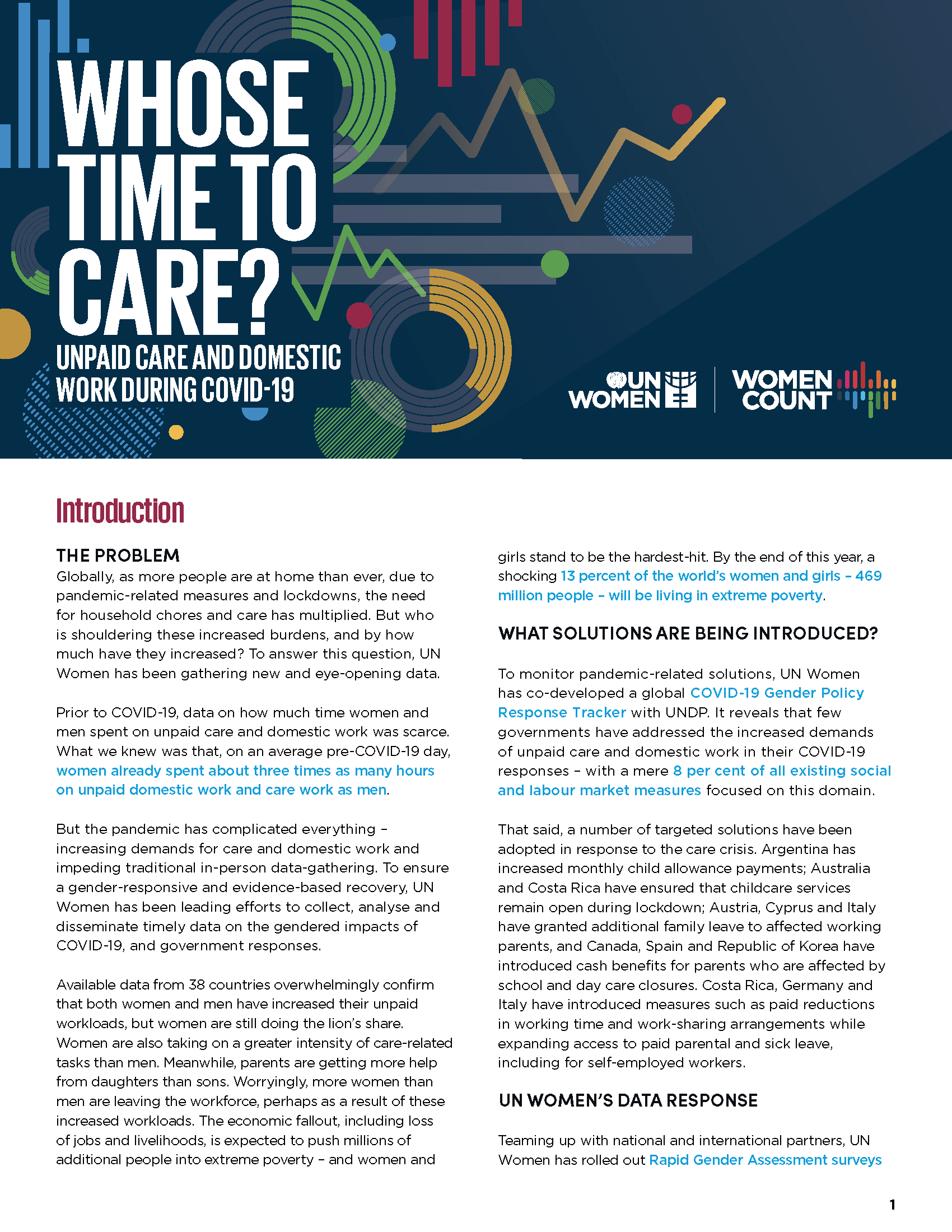
Globally, as more people are at home than ever, due to pandemic-related measures and lockdowns, the need for household chores and care has multiplied. But who is shouldering these increased burdens, and by how much have they increased? To answer this question, UN Women has been gathering new and eye-opening data.
Data from 38 countries with available data overwhelmingly confirm that both women and men have increased their unpaid workloads, but women are still doing the lion’s share. Women are also taking on a greater intensity of care-related tasks than men. Meanwhile, parents are getting more help from daughters than sons. Worryingly, more women than men are leaving the workforce, perhaps as a result of these increased workloads.
Teaming up with national and international partners, UN Women has rolled out Rapid Gender Assessment surveys (RGAs) in nearly 50 countries, using a variety of phone and online methods. Reports from the Asia-Pacific, Europe and Central Asia, and Arab States regions are now available.
The Women Count programme has also been monitoring how these RGA results are being used to improve the design of COVID-19 programmes and interventions, and is documenting ‘use cases’ that integrate RGA results within gender-responsive planning, programming, or advocacy work amid COVID-19. At least seven countries have used the findings of the RGAs in their COVID-19 response plans.
Additional resources:
Data and resources on COVID-19
From insights to action: Gender equality in the wake of COVID-19
Global Gender Response Tracker assesses COVID-19 measures for women
Guidance: Rapid gender assessment surveys on the impacts of COVID-19
Progress of the world’s women 2019–2020: Families in a changing world
